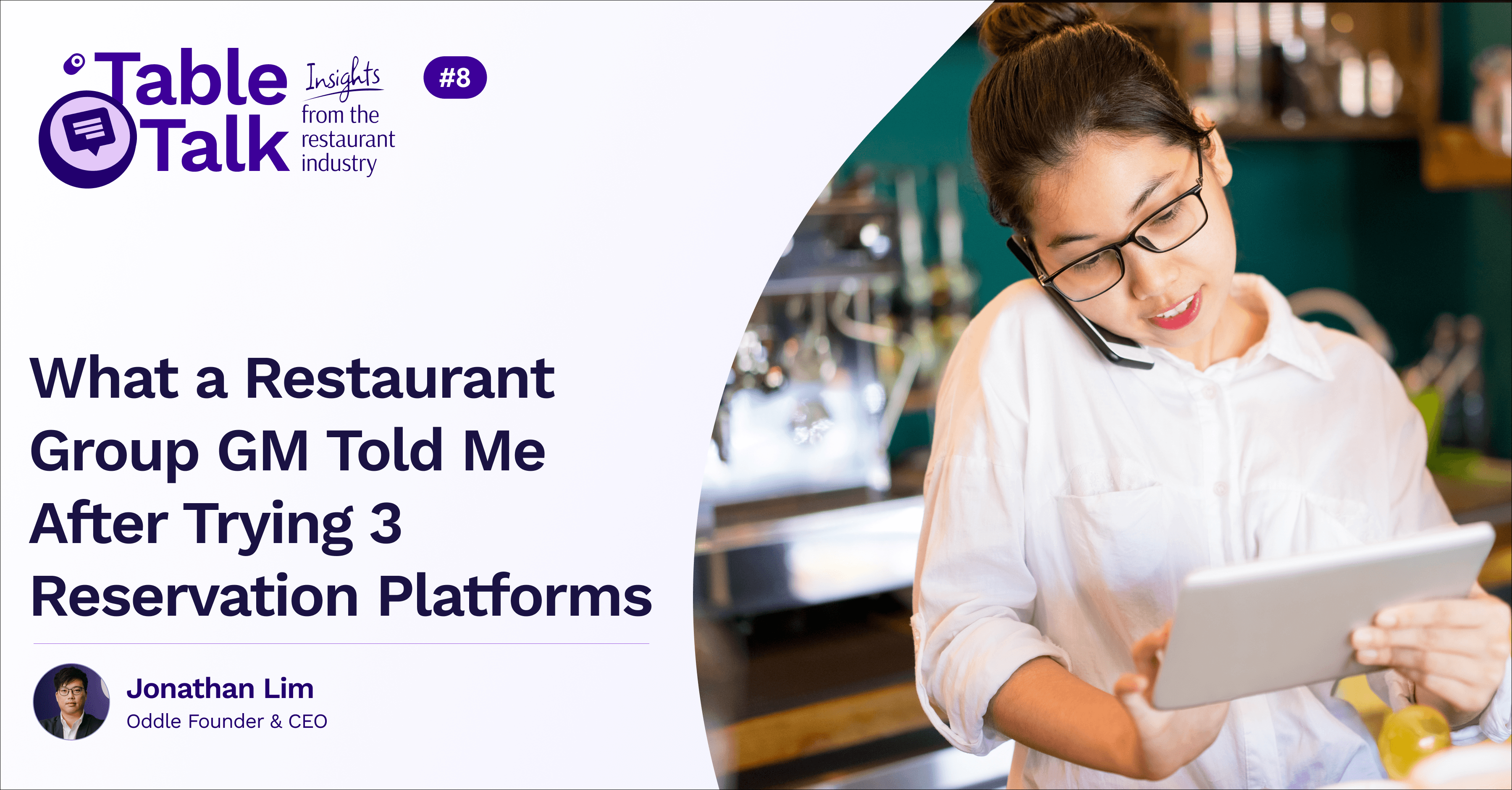What a Restaurant Group GM Told Me After Trying 3 Reservation Platforms
“Jon, they’re all the same—so I’d rather save the money and grow my sales.”

Recently, I had a frank conversation with Jianbang, Group GM of AC Concepts—the team behind Kulto, Chicco, Humo, Cenzo, and Barrio.
They’d used Inline, then SevenRooms, and decided to try Oddle Reserve for two of their concepts—Chicco and Barrio.
After a few months, he told me something that stuck:
“Jon, I’ve switched between platforms and honestly—they’re all about the same.
You may not have all the bells and whistles, but I rarely use those features anyway.
I’d rather save the money. And more importantly, you help us grow our sales with all the growth initiatives you’ve built in.”
That insight says everything.
Most Reservation Systems Are Just Admin Tools in Disguise
Jianbang’s comment got me thinking—how many restaurant owners are quietly overpaying for reservation systems that look impressive on paper… but don’t actually grow the business?
Let’s break down how the cost adds up:
1. Marketplace Model: Paying to Compete with Yourself
You pay per cover, then get charged again when the platform runs ads on your brand name and intercepts your customers.
You’re essentially paying rent on your own regulars.
2. Fixed Fee Model: High Cost, Low Return
$300 to $700/month might sound reasonable—until you realise:
- Most chains get bookings from walk-ins, not online
- Smaller restaurants pay $2+ per booking without seeing extra demand
💸 Challenge: What’s Your Cost Per Booking?
Take a moment and do this quick mental math:
If that number is $2, $5, or even $10+, you’re not running a system—you’re renting your own tables.
And if you’re not getting diners who wouldn’t have come otherwise, then you’re not buying growth.
You’re just managing demand at a cost.
Why Most Restaurants Overestimate the Value of Reservation Systems
Here’s the hard truth: many restaurant owners mistake convenience for growth.
They think:
- “I have a premium reservation system, so I must be doing something right.”
- “The platform brought me bookings.”
But in reality:
- The customers likely already knew you—they just needed a place to reserve.
- The platform didn’t create demand. It captured it—and charged you for it.
Reservation systems help manage traffic. But they don’t build top-of-funnel reach, repeat visit frequency, or brand equity. That’s your job—and your growth system should help you do that.
What AC Concepts Did Differently
After starting with two brands, they brought their newest concept—Humo, a Spanish izakaya bar—onto Oddle Reserve too.
Why?
Because the goal wasn’t just operational efficiency.
It was commercial logic.
Instead of spending $700/month on a passive system, they now channel that budget into:
- Ads targeting high-intent diners nearby
- Return voucher campaigns to boost repeat visits
- Email reminders to bring back lapsed customers
The system still takes reservations—but now it’s part of a larger flywheel, not a siloed cost center.
🚀 From Visibility to Loyalty—A Full-Funnel Reservation System
When traffic dips, many restaurants default to discounts.
But here’s the truth: if people aren’t discovering you in the first place, no discount will help. You’re just offering a deal to the few who already know you.
Instead, here’s the smarter sequence:
- Boost Discoverability
- Minimise No-Shows
- Drive Repeat Visits
- Build Loyalty Over Time
Most systems stop at the calendar. We extend it into a customer engine.
📊 What the Best Restaurants Actually Track
Smart operators don’t just track:
- Cost per booking
They look at:
- Cost per returning booking
- % of bookings from repeat diners
- Return rate of first-time guests
- Impact of return incentives and reminders
This is where most systems stop short—and where Oddle starts delivering.
The Real Question: Why Are You Paying So Much for Something That Doesn’t Sell?
Reservation systems are tools. But tools should pay for themselves.
If your current platform isn’t actively helping you get more diners or deeper relationships, it’s just a line item.
No prestige, no “pro dashboard,” no feature list justifies that spend if it doesn’t drive ROI.
Final Thought: Sometimes, Less Is More—Especially When It Comes to Features You Never Use
If you’re wondering whether your system is helping or hurting your bottom line, ask yourself:
“What would I do with $700 a month if it wasn’t going into a glorified calendar?”
We’re happy to walk through the math, the tradeoffs, and the upside—just like we did with AC Concepts.
Until next time,
Jonathan Lim
Founder & CEO, Oddle